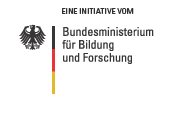Inge Broer: Keeping a cool head on dangerous terrain
-
 <ic:message key='Bild vergrößern' />
<ic:message key='Bild vergrößern' />
- Inge Broer: Professor in the Department of Agricultural and Environmental Science at Rostock University. Quelle: Inge Broer
14.11.2007 -
Every day in her work, Inge Broer has to walk through a topical minefield. Broer was one of the first scientists to work with genetically modified plants – a controversial area of research that occasionally comes under concerted attack from passionate opponents. In this field, you need to keep a cool head above all. Indeed, the Professor in the Department of Agricultural and Environmental Science at Rostock University refuses to resort to polemics. What ultimately counts for Broer is the scientific justification, no matter if it weighs for or against genetic engineering.
Broer began her scientific career in Bielefeld. When starting out as a biology student, she was opposed to genetic engineering. "When the Professor in Genetics took her place at the university, I said to my fellow students: “I’ll never do genetics” says the Professor today. However, already during her studies, she noticed that "genetics was simply too exciting to not get involved", she says. And what fascinated her so much about the subject? "That it's so logical," says Broer. Nonetheless, she did not quickly discard her doubts about the technology's ultimate consequences, but she did want her reservations to have some scientific basis.
From opponent of genetic engineering to agrobiotech Professor
Broer only accepted her postdoctoral subject of “The production of a herbicide-resistant plant" in order to finally prove the safety risks of such plants. Today, she calls this "youthful frivolousness". Ultimately, she was unable to find any risk, despite her best efforts. And was there a turning point in her attitude to genetic engineering? "Yes and no" answers the scientist. " I learnt in my research that to reject the technology as a whole is nonsense.", says Broer, because "the risk is not in the mode of production, but in the product". It is Broer’s opinion that every new GM plant with new characteristics should be tested afresh on the heart and kidneys. The intended application is also important for the Professor. "I believe it is significant that the plants that we create have an aspect of sustainability. Otherwise, I do not see the point of making it in the first place", says Broer, describing her fundamental convictions.
The potato as a supply of raw materials
Fourteen years ago, whilst still working from Bielefeld, Broer began to develop the "Plant Genetics and Agrobiotechnology" working group at the University of Rostock. Her efforts were met with success. Today, she is working as a professor with her group on, among other things, a potato that produces polyaspartate, a biologically degradable substance that can be used as a replacement for polyacrylcarboxylate, used in the production of plastic. The researchers working on the potato have used a gene from a cyanobacterium, which produces the polyaspartate-containing cyanophycine as a storage substance. "We have managed to achieve over five percent of the dry mass of the potato tubers. That’s an enormous amount, "says Broer enthusiastically. Nevertheless, a great deal of tweaking is still required. "The first plants looked pretty odd", she says. Of course, what is invested in aspartate production is missing elsewhere in the potato. A further area of work is the optimisation of plants that manufacture medicinally active substances. For example, Broer’s group is currently working on peas that produce a vaccine against a 100% deadly hemorrhagic illness in rabbits. To date, the vaccine is manufactured using animal material but, technically, alternative approaches are also possible.
| In the “Genome Analysis of the Plant Biological System” research group (Genomanalyse im biologischen System Pflanze, GABI) scientists are focusing on eleven plant genomes, alongside other projects. In 2006, the GABI FUTURE program was begun by the BMBF. 50 million euros is available for the program until 2009. More |
Broer’s policy: Talk to the protesters
It’s been a while since Broer spent time in the laboratory. "This is unfortunate", she says. Alongside her research and teaching work, Broer is also involved with the integration of expertise and resources in green genetic engineering. She is the co-founder and chairman of FINAB e.V., which began work in 1999, in which, says Broer, "scientists from all manner of fields who are somehow involved in agrarian research come together." She is also involved with the development of the AgroBioTechnikum in Großlüsewitz, which was founded in 2004 – “an arm for extending research into application", as she puts it.
This institution, where Broer carries out her GM outdoor exposure tests, has been the subject of particular ire from environmentalists and opponents of genetic engineering. There were even attempts to occupy and destroy fields that contained GM plants belonging to the school in the protests surrounding the G8 summit. As regards the debate surrounding green genetic engineering, Broer is careful with her words. "Every time a protest has taken place, we’ve gone to the fields and talked to the people involved" she explains. Objections are always taken seriously. "I consider these discussions to be very important. One must always have an ear for public scepticism".
If possible, Inge Broer spends her spare time with her family: “At least when I’m on holiday, I’ve finally got enough time for my two sons."
Author: Miriam Ruhenstroth




